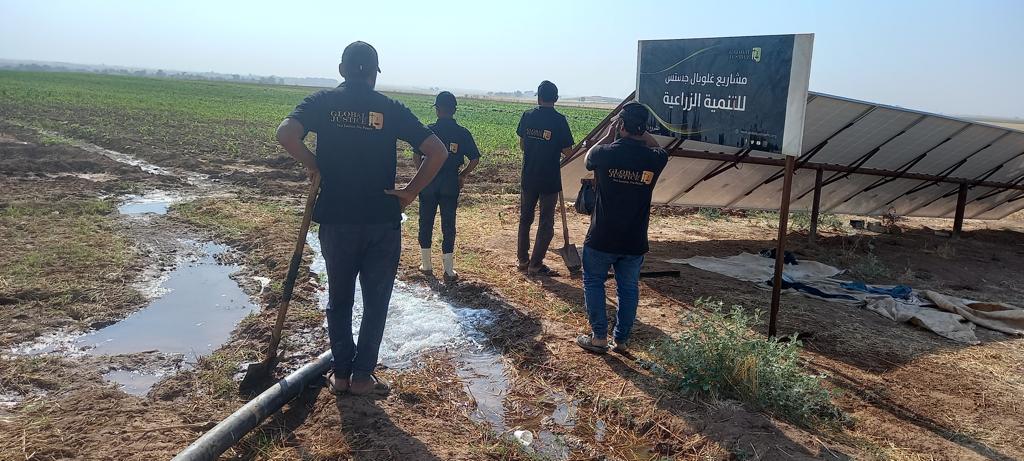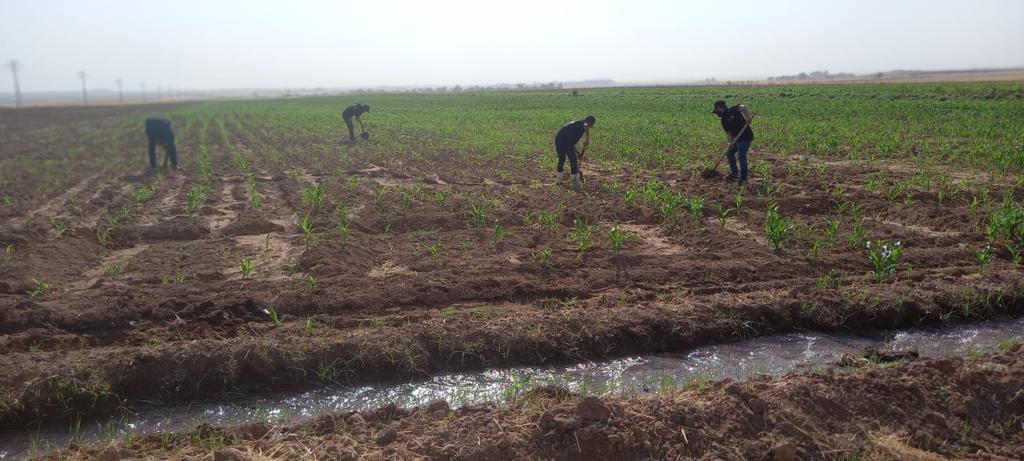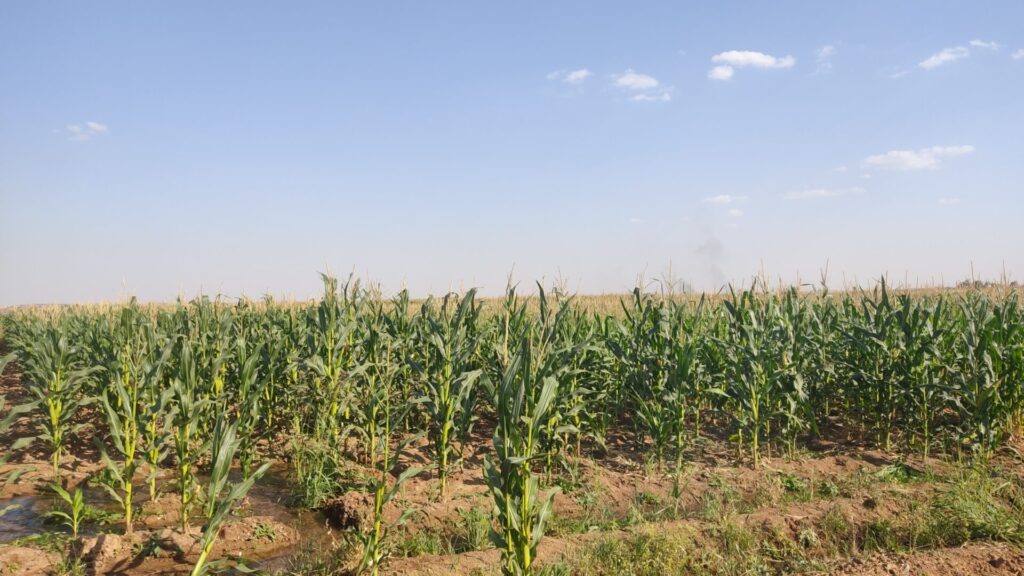Our Agricultural Projects
Our organization believes that revitalizing the vast areas that were scorched by the Assad regime’s war on Syrian lands by reintroducing greenery is essential. This rejuvenation lays the foundation for the recovery of the Syrian community in all its facets: economic, educational, and health. Consequently, this ensures the propagation of new awareness among younger generations and shields children, women, and the elderly from the harsh conditions they suffer from. Given the, our organization selected areas in Northern Syria that fall under the American exemption 22 from sanctions to establish its continually expanding agricultural projects.
Water :
The Ras al-Ayn region is situated above an abundance of groundwater. However, extracting this water is financially burdensome due to the constant lack of fuel needed to operate well engines. As a solution, our organization equipped the projects with solar panels to extract water using electricity.

Wheat Cultivation:

The cultivation of wheat and barley holds a strategic position in Syria, particularly in its northeastern quadrant. This region has historically depended on the annual wheat cycle for millennia. Singularly, the province of Al-Hasaka produced approximately 65% of Syria’s wheat prior to 2011. In that year, Syria’s wheat production peaked at 3.9 million tons, only to experience a decline in 2012 to a mere 1.6 million tons. By 2015, the yield was about 425,000 tons, further diminishing to 420,000 tons in 2016. It’s noteworthy to mention that Syria was once the sole nation in the region self-sufficient in the production of essential agricultural crops, such as wheat and barley.
The team at “Global Justice” recognizes the indispensable role of wheat in the livelihood of the inhabitants. Consequently, our organization has endeavored to establish two agricultural seasons, winter and summer, facilitating a rotation between summer and winter crops, inclusive of wheat, cotton, among others.
The International Center for Agricultural Research in the Dry Areas (ICARDA), an affiliate of the United Nations, has pioneered the development of primary crop varieties, such as barley and lentils, tailored for developing countries. Additionally, it has produced wheat varieties optimized for the Middle East and North Africa. As one of the top 15 agricultural research centers globally, ICARDA was granted a thousand-hectare tract near the town of Tal Hadya in the Aleppo countryside.
This was designated for the cultivation of improved varieties harmoniously adapted to the Syrian environment. Over 18 wheat variants were produced, variants which many Syrian farmers continue to utilize to this day.
By 1999, a staggering 87% of wheat farmers had adopted the cultivation of novel wheat strains. Furthermore, 99.5% employed commercial fertilizers, and over 90% utilized insecticides and chemical substances to enhance seed viability. Within a relatively brief span, the nation not only achieved self-sufficiency in wheat but also boasted a surplus sufficient for exports in prosperous years.
Cotton Cultivation :
The war, coupled with the years of neglect preceding it, significantly impacted cotton farming in Syria, especially in the Al-Jazeera region known for it. While Syria’s cotton produce once reached over a million tons (with Al-Hasaka contributing 50% of this amount), it dwindled to less than 100,000 tons in the years following 2011. The region Global Justice chose, Ras al-Ayn in Northern Syria, heavily relies on cotton farming, with 22% of the household income stemming from it. Our organization is keen on revitalizing this sector and employing both male and female farmers. We also emphasize agricultural education and guidance, ensuring the provision of seeds, fertilizers, and pest control methods.
Corn Cultivation:
One of the most suitable soil types for corn cultivation is found in Northeast Syria, especially in the Euphrates basin, including the “Ras al-Ain” area, which our organization selected for its agricultural projects.
Global Justice studied the ideal soil for successful corn cultivation in its projects. According to their analysis, the “sandy clay” soil in the northern Syrian lands has a homogenous sedimentary nature. This soil is fertile, well-draining, and aerated. It’s also free from salinity and alkalinity. The fertility of the soil does not only impact the yield but also affects the length of the plant’s growth period. It has been observed that the addition of chemical fertilizers can accelerate the appearance of shoots by 4-10 days.
Yellow corn is an irrigated summer crop. Its time in the ground is relatively short. Taking advantage of this characteristic, the same land can be planted twice a year with two different crops. The seed requirement for a single dunam of corn is between 2.5 – 3 kilograms. The yield from this dunam ranges from 1,500 to 4,000 kilograms of corn.

Livestock Wealth :
The abundant production of organized agricultural projects has provided an excess of fodder, motivating our team to launch a sheep breeding project to rejuvenate the livestock wealth. This initiative aims to supply meat and dairy to the residents of Northern Syria and further contribute to employing the workforce


